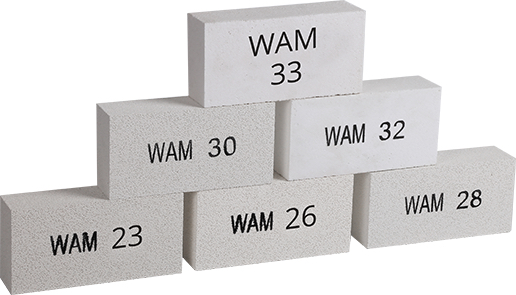The Best Solution For Energy Saving And Reducing CO2 Emission
The Best Solution For Energy Saving And Reducing CO2 Emission
 Tel: +86-532-85717690/85717352/85832089
Tel: +86-532-85717690/85717352/85832089 E-mail: wam@wamcn.net
E-mail: wam@wamcn.net
Insulation limits heat transfer, lowering the amount of energy needed for increased temperatures and protecting nearby components from heat damage.
The exfoliated vermiculite which provides a lightweight and versatile solution in the domestic context is pressed into boards that can be cut with standard carpentry equipment to fit around stoves and fireplaces.
It is integrated into cement for filling gaps in burning fireplaces or covering outdoor brick ovens, and it also can be applied in masonry cavities for enhanced fire safety and reduce heat loss.
In reformers, reactors, and boilers, insulation bricks are often used to provide thermal insulation and prevent heat loss from the device.
These bricks are constructed from a variety of materials that have high thermal insulating qualities, which include vermiculite, ceramic fibre, perlite, and low thermal conductivity.
If you require an insulating brick for industrial applications, make sure to obtain a high-temperature insulating brick.
Insulating bricks are constructed from a variety of insulating materials. The following are the most commonly utilized raw materials for insulating bricks:
These clay bricks are used for insulation in medium or low-temperature applications.
Made of vermiculite, a mineral that occurs naturally. These bricks are utilized in applications requiring low thermal conductivity and strong heat resistance.
These high-purity silica bricks are utilized in high-temperature applications.
These calcium silicate bricks are utilized in applications that demand great strength and insulation.
These bricks are formed from magnesium oxide and are put to use in applications that demand good corrosion and abrasion resistance.
Important characteristics of insulating products are mentioned below;
1. Density
2. Thermal Conductivity is low
3. Heat Capacity
4. Surface emissivity
5. Insulation Thickness
6. Thermal Bridging
Calcium silicate and ceramic fiber are two alternatives for high-temperature insulation in industries.
Calcium silicate is non-fibrous, comes in easy-to-work boards, and is typically used as alternative insulation.
Ceramic fiber is an efficient insulator due to its low heat storage, low thermal conductivity, and strong resilience to thermal shock.

The type of insulating material used in bricks is determined by the temperature range that it must sustain and the application.
The adoption of insulating bricks in boilers is crucial because it improves energy efficiency and reduces heat loss, resulting in lower fuel consumption and greenhouse gas emissions.
Insulating bricks in reformers aid to sustain the high temperatures required for chemical reactions while limiting heat loss.
Insulation bricks in reactors aid in maintaining a consistent temperature, eliminating fluctuations that could disrupt the chemical process or reaction.
Insulation bricks may additionally offer mechanical stability, resistance to high chemicals and temperatures, and resistance to thermal shock.
They may be molded and trimmed to fit any piece of structure or equipment, making them extremely adaptable.
We manufacture high-temperature insulating bricks in a variety of shapes, densities, and chemical compositions to suit a wide range of applications, including kiln and furnace linings. Please click here to see our products.